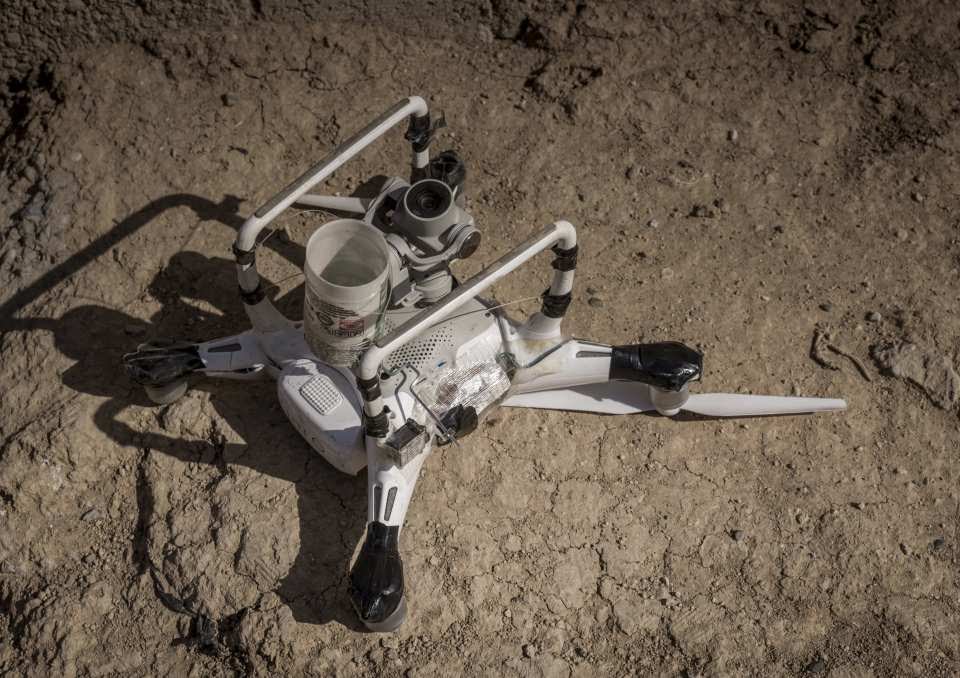Blog entry by Bruce McPherson

AN ISIS terrorist blew himself up when the drone bomb he was operating ran low on battery — and flew back.
The idiotic killer was targeting allied forces after the Battle for Mosul in northern Iraq.
He had customised his weapon to carry plastic explosive and planned to detonate it by troops based in the city.
But his plan backfired because he had forgotten to sufficiently charge the device.
Civilian drones — as weaponised by ISIS — automatically ‘boomerang’ back to their point of launch when they start to run out of power.
They are programmed to return to prevent owners losing their machines.
OPERATION SHADER
UK troops — including the SAS — are training Iraqi soldiers as part of Operation Shader and are plagued by drone attacks.
A security source said: “We receive intelligence from locals about enemy activity and tactics.
“We learned this idiot had wired up his drone with explosives but was killed when it’s batteries ran low and it flew home.
“With a weak signal for some reason it detonated over his head.
“This caused quite a laugh for us but the drone threat is very real. The fighter killed himself last year due to his own ineptitude, but is still keeping moral high today.” ISIS has become advanced in its use of drone weapons, which it dubs its ‘air force’.
A jihadi in a 2017 ISIS ‘teaser trailer’ featuring huge explosions after drone strikesThe battle for Mosul ended officially in 2017 but British troops are still training Iraqis there.
Although the battle for the city was won, the drone threat is ongoing.
DRONE THREAT
Customised commercial versions — such as the £1,200 Chinese-made DJI Phantom — are used as flying bombs or to carry munitions to drop.
The source said a common, simple and effective tactic is to push a hand grenade — with pin pulled — in a steel tube attached to the aircraft.
Once over the target the drone is remotely dipped so the grenade slides out of the tube, releasing the trigger mechanism.
Some grenades are adapted with fins attached to help them fly more accurately.
Iraqi security forces then came up with their own response, by attaching shuttlecock feathers to their own grenades, again dropped by drone, to help guide the munitions to the ground.
The source added: “Drone warfare is hugely effective for insurgents.
By Stephen Moyes